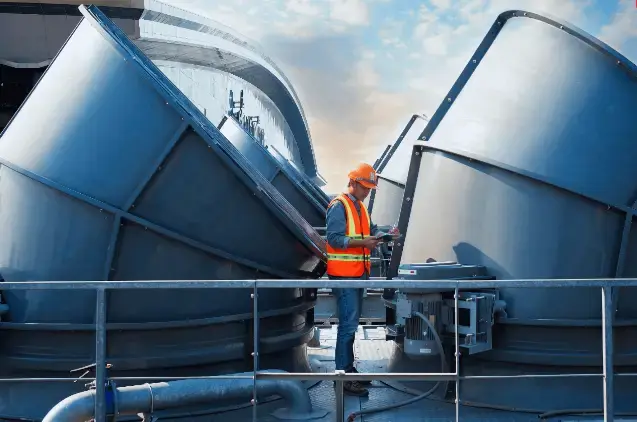Overcoming Food & Beverage Manufacturing Challenges
Explore some common challenges that food and beverage manufacturers face in 2024 and role that smart technologies play in successfully navigating them.
Solutions
Workplace Management Solutions
Real Estate Management Solutions
Maintenance Management Solutions
Energy Management Solutions
Engineering Document Management Solutions
Asset Management Solutions
Automate campus scheduling for classes, meetings, and exams with our EMS software.
Plan and manage conferences effortlessly with EMS software to impress guests and streamline operations.
Boost workplace flexibility and maximize space use with seamless desk and room booking.
Organize workplace or campus events smoothly, creating memorable experiences.
Optimize workspace, manage allocations efficiently, and reduce costs with our space management solutions.
Deliver projects on time and within budget by improving communication, collaboration, and efficiency with our software.
Streamline lease accounting for ASC 842, IFRS, and GASB compliance.
Manage leases efficiently by tracking key dates, analyzing costs, and ensuring compliance.
Centralize data and analytics for better insights, faster negotiations, and revenue growth.
Centralize facility and asset maintenance, automate work orders, and ensure compliance with our CMMS software.
Extend asset life, reduce downtime, and prevent costly repairs with data-driven monitoring.
Prevent equipment failures and extend asset life by detecting and addressing issues early.
Make sustainable, cost-efficient energy decisions by monitoring and optimizing power consumption.
Remotely monitor and control equipment with real-time data to predict issues, boost efficiency, and reduce downtime.
Easily share and collaborate on documents, creating a single source of truth for engineers and contractors.
Manage and analyze assets across their lifecycle to schedule maintenance, reduce downtime, and extend lifespan.
Improve visibility, automate work orders, and ensure compliance for efficient facility and asset management.
Resources
Browse our full library of resources all in one place, including webinars, whitepapers, podcast episodes, and more.
Support
Looking for access to technical support, best practices, helpful videos, or training tools? You’ve come to the right place.
About Accruent
Get the latest information on Accruent, our solutions, events, and the company at large.
Enterprise refrigeration management software helps you take advantage of refrigeration management tools to maximize visibility into your HVAC and refrigeration systems and maintain control of every asset throughout its lifecycle

Improve asset performance and streamline equipment maintenance while reducing costs and compliance risks by relying on real-time, 24/7 monitoring.
Gain insights into refrigerant assets, including HVAC systems and sensors, to quickly identify problems and make smart, money-saving decisions.
Predict if a case is going to fail and fix it before catastrophe strikes. Determine refrigerant leaks before they get out of hand. Reduce emergency work orders, time spent performing repairs, and business disruption.
Always be prepared for audits by tracking all food and safety standards and consolidating refrigerant usage data from multiple locations to simplify compliance and avoid fines.
Automatically ensure proper setpoints and assets achieve the correct temperature to maintain product quality and avoid food spoilage.
Manage costs across the enterprise without compromising critical refrigerated assets that keep food and customers safe.
Automate processes with built-in workflows and rules, including:
Capture all refrigeration and HVAC events for deeper insights and compliance, such as:
Achieve even greater efficiency with the ability to integrate with your CMMS or field management system to:
Explore some common challenges that food and beverage manufacturers face in 2024 and role that smart technologies play in successfully navigating them.
Learn how businesses optimize efficiency, reduce costs, and embrace sustainability for a greener future with energy management.
Discover the key challenges that US food and beverage manufacturers face in 2024, including inflation, worker shortages, supply chain disruption, and more.
An ERMS should come with features designed to improve the efficiency of refrigeration and HVAC systems. This includes identifying problems and compliance pitfalls before they surface.
Primary features include energy consumption analysis, predictive maintenance capabilities, and comprehensive alerts to stay up to date on maintenance schedules.
The most critical feature is 24/7 monitoring, ensuring that organizations stay on top of operational deficiencies before they become larger issues.
Yes, Accruent’s ERMS ensures organizations stay compliant with food safety regulations from the FDA as well as refrigerant management standards via the EPA.
Thanks to around the clock temperature monitoring and compliance reports, businesses can easily meet regulatory goals. An intuitive reporting dashboard makes it simple to gather data and share insights with key stakeholders.
Accruent’s ERMS can be customized to take on any type of business, including cold storage, pharmaceuticals, hospitality, healthcare, and manufacturing.
The best part is ERMS’s scalability across one or many refrigeration systems throughout an organization. Companies can quickly plugin data across locations to ensure seamless tracking and reporting.
Accruent is built to adapt to diverse business initiatives and requirements.
There are various mechanisms used to improve workflows, including proactive maintenance scheduling, remote troubleshooting, and compliance management.
By improving workflows, this software will expand the lifecycle of maintenance and refrigeration equipment, reducing maintenance costs.
Accruent helps organizations maximize the efficiency and longevity of their refrigeration systems, enhancing overall business performance along the way.
Yes, this ERMS can be implemented quickly, allowing organizations to reap its benefits from day one. Start managing your refrigerant and maintaining up to date standards quickly.
If your organization has been struggling to keep up with changing compliance standards and protocols, Accruent’s ERMS is an intuitive solution that is easy to integrate.
Don’t see your question? Let us help you
Enterprise Refrigeration Management Software
Accruent software allows you to fully optimize the lifecycle of your assets and facilities, offering connected workflows, integrated experiences and data-backed insights.
Subscribe to stay up to date with our latest news, resources and best practices.
* To unsubscribe at any time, please use the “Unsubscribe” link included in the footer of our emails.